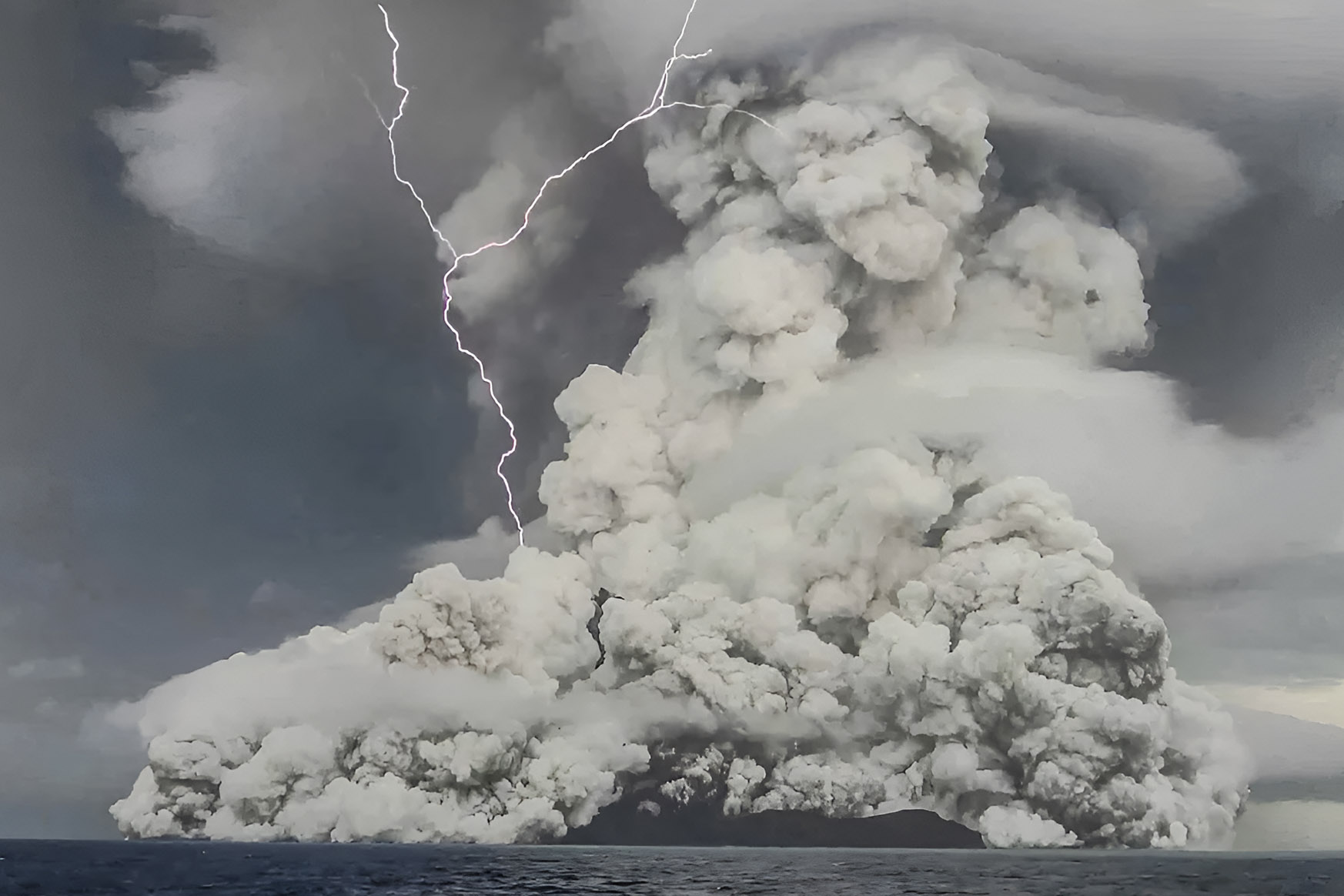
When the Hunga Tonga-Hunga Ha'apai (HTHH) volcano erupted on January 15, 2022, in the South Pacific, it produced a shock wave felt around the world and triggered tsunamis in Tonga, Fiji, New Zealand, Japan, Chile, Peru, and the United States.
This event caused significant changes in stratospheric temperatures, dynamics, and chemistry, including reductions in ozone, which is vital for protecting life on Earth from harmful ultraviolet radiation according to a recent study published in the Proceedings of the National Academy of Sciences.
Using satellite data, Wilmouth and his colleagues analyzed the global evolution of the injected water vapor in terms of latitude, altitude, and time over the year following the eruption. Employing a large-ensemble 3-D chemistry–climate–aerosol model to evaluate the stratospheric response to a volcanic perturbation of water vapor and sulfate aerosol comparable to the HTHH eruption they were able to identify significant changes in the concentrations of various chemical compounds in the stratosphere, directly linked to the eruption Their work benefited from computational support provided by the Research Computing Center at Harvard University.